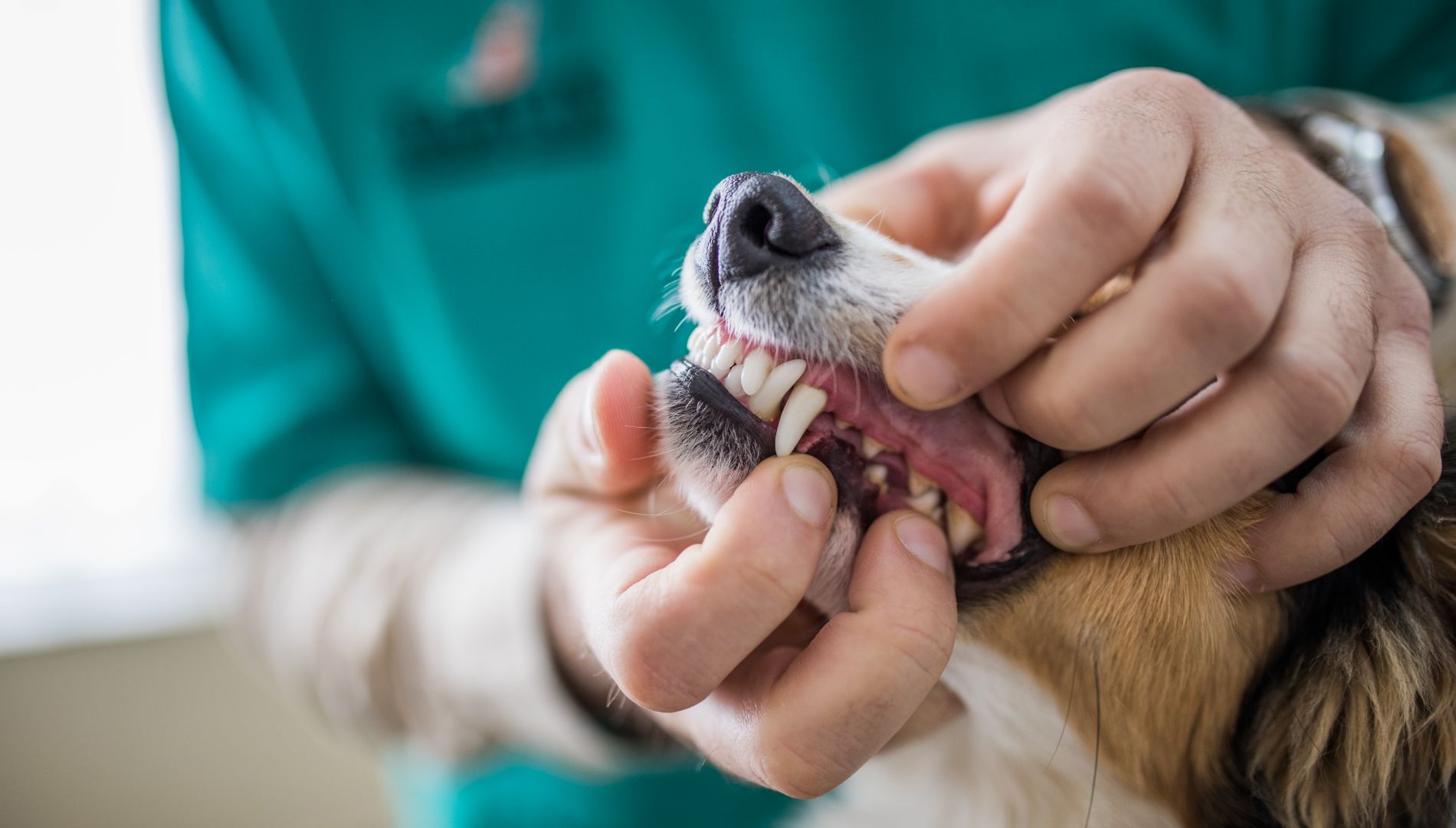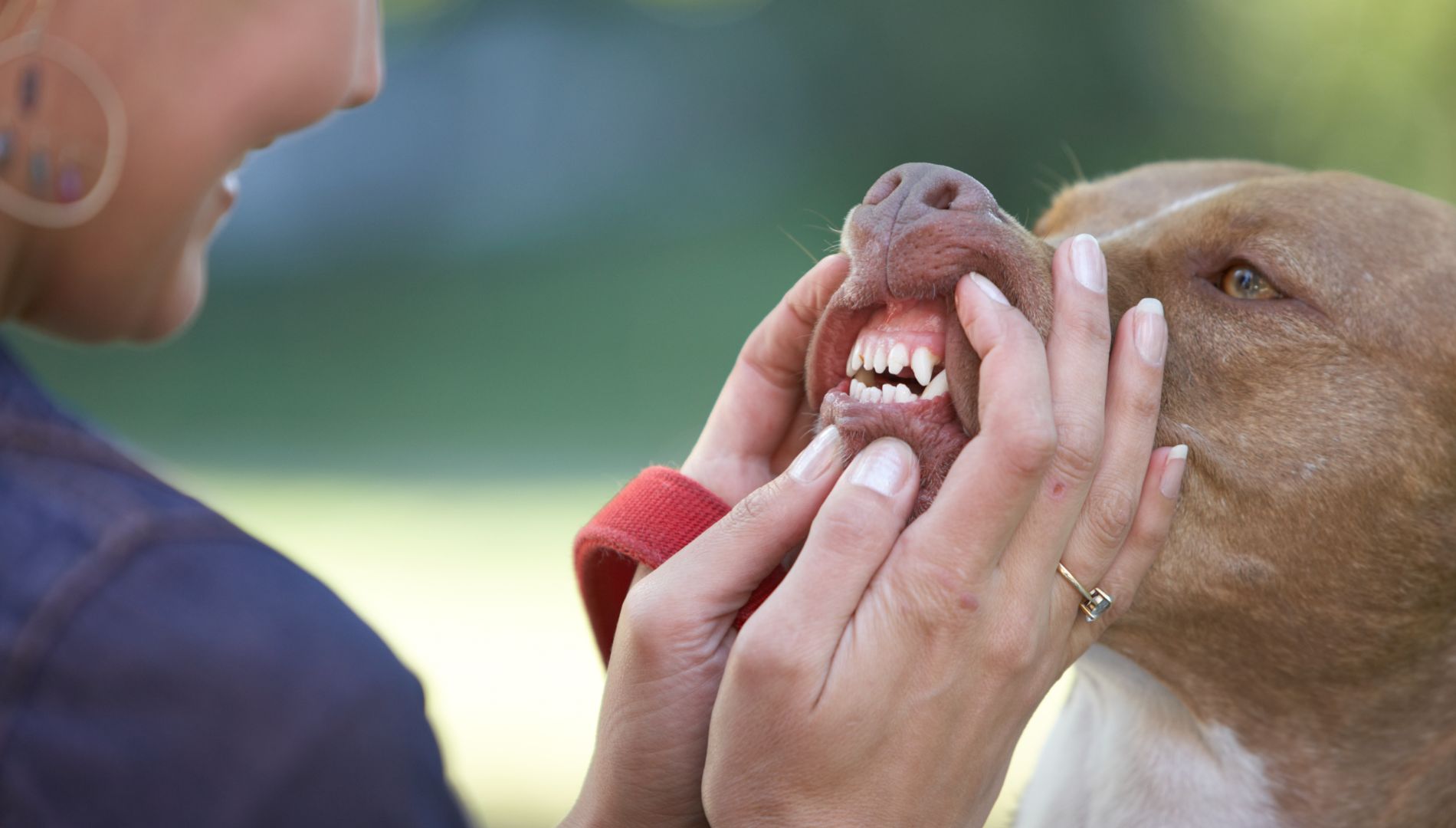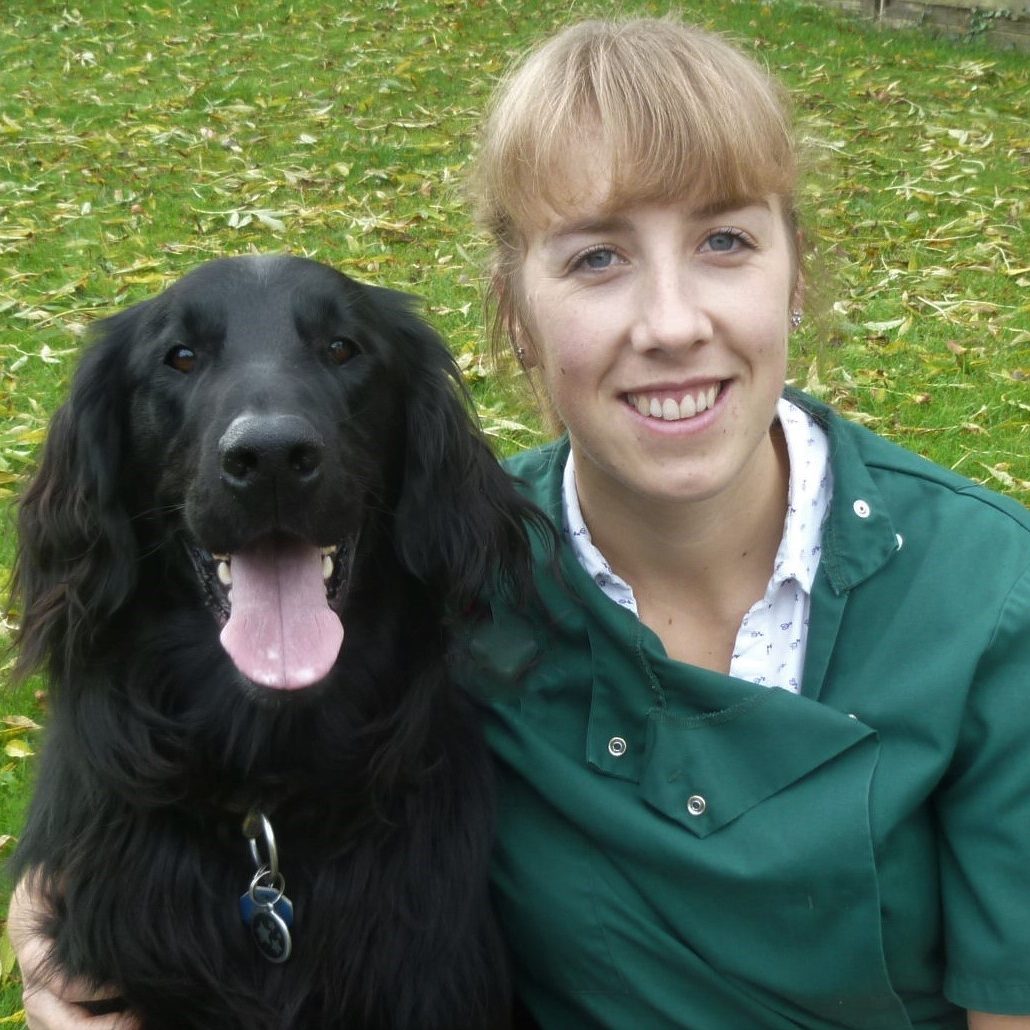Pale dog gums: what do they mean? We ask a vet to explain
Pink or pale dog gums? Everything you need to know about dog gum health, how to spot unhealthy gums. and when to call the vet

Gum health is a valid concern for canine owners and spotting pale dog gums could be a sign it’s time to call a vet. It’s really important to keep an eye on your dog’s mouth by looking for the signs of healthy or unhealthy gums, as well as the appearance of their teeth.
Put simply, healthy gums are soft, wet, and pink, whereas unhealthy gums are going to differ in color and texture. We’ll be diving into some more telltale signs of what to look for when you’re checking your dog’s gums, what it means if they're pale and how you can keep them healthy.
Pale dog gums: what does it mean?
According to vet Dr Rebecca Macmillan, pale dog gums are a sign of shock – a condition that can take lots of different forms.
“Shock happens when blood flow to the tissues in the body is compromised, which leads to a lack of oxygen delivery, and there are many different reasons why blood may not be flowing to the tissues as normal,” explains Dr MacMillan.
According to Dr Macmillan, dogs can suffer from...
- hypovolaemic shock when there is not enough blood flowing around the body. It may be caused by a large wound somewhere or an internal bleed (e.g. from a tumor or trauma), and it can occur in dehydrated pets.
- cardiogenic shock when the heart is not performing well, so the blood is not being pushed around the body effectively.”
- anaphylactic shock which happens in response to a severe allergic reaction. The massive amount of histamine released in the body causes all its blood vessels to dilate, which causes inadequate blood supply and oxygen delivery. This falls into a category more broadly known as distributive shock which can also occur in any other severe inflammatory process like sepsis or pancreatitis.
Your dog’s gums can also be pale if they are suffering from anemia.
“As in hypovolaemic shock, anemia can occur when your dog loses a lot of blood.” says Dr MacMillan. “However, anemia can also develop due to other issues like iron deficiency, immune-mediated disease, or secondary to other health issues like kidney failure.”
Get the best advice, tips and top tech for your beloved Pets
What to do if you spot pale dog gums
Because pale dog gums can be a sign of something serious, Dr MacMillan advises owners to act quickly. “If you think your dog’s gums look pale, especially if they are showing any other signs of ill health like lethargy, an elevated heart rate, or breathing difficulties, then you should contact your vet immediately,” she says.
“If your dog is in shock or severely anaemic then this can be life-threatening, so urgent supportive treatment is required.”
Healthy vs unhealthy dog gums: how to tell the difference
When taking a look inside your dog’s mouth you might be wondering how you can tell the difference between healthy gums and unhealthy gums. Let’s take a look at the facts.
First off, it’s worth knowing what is normal for your own dog. Checking your dog’s gums regularly will not only allow you to familiarize yourself with your dog’s mouth but also help you spot any issues early on. For example, some dogs have darker spots on their gums as part of their normal pigmentation. It’s when those normal physical attributes start to appear different that you will want to get some professional help as soon as you can.
In terms of the physical appearance of a dog’s gums – what looks healthy and what’s unhealthy – we’re going to run through a list to help you be able to better judge whether you need veterinary support right now for your dog.
Healthy dog gums
- Color: “Normal, healthy gums are pink and uniform in color,” says Dr Rebacca MacMillan. ”If you gently press on the gum with the tip of your finger and release it, the color should blanch (whiten) and then come back again in less than 2 seconds. This shows that your pet’s circulation is working well.”
- Texture and appearance: “Healthy gums are moist and smooth. Gums should be tight and smoothly follow the line of the teeth.”
Unhealthy dog gums
- Color: Unhealthy gums will not be a soft pink color. Dr Macmillan says: “If the gums are very pale, yellow, or bright red, then seek help from your vet immediately, especially if your dog also seems sick. Changes in gum color can indicate serious issues like shock, jaundice, or toxicity.”
- Texture and appearance: “If the gum is receding, and more of the tooth is exposed than usual, then this is a sign of disease. Also, gums that are red, swollen, or bleeding could mean a dog is suffering from gingivitis. If you notice any lumps on your dog’s gums or changes in pigmentation, these also need to be checked out by your vet.
“While some growths found in the mouth can be benign, others are cancerous and may need urgent treatment.” - Smell: If you’re starting to notice your dog’s breath becoming ‘bad’ or rancid, this is also a clear sign of infection.
What causes unhealthy dog gums?
Dog gum diseases
When it comes to dog gum diseases, such as gingivitis or peridontitis, the sooner it is treated the better, before it causes further health implications.
There are many things we can do as dog owners to help our pets achieve healthy gums instead of unhealthy ones. For example, healthy dog gums are aided by daily tooth brushing as well as providing your dog with the best long lasting dog chews or best dental chews for dogs. A good quality, natural diet also plays a role in your dogs' oral hygiene and overall health, as do regular checkups with your vet.
Greenies Original Regular Natural Dental Care Dog Treats
These tasty treats have a chewy texture and come in a variety of flavors. They help clean your dog’s teeth, maintain healthy gums and freshen their breath.

How to prevent unhealthy gums
Such a simple thing such as adding regular chewing opportunities for your dog can really help with their oral health. The process of mastication (chewing) of food can have a large impact on our dogs’ well-being. According to the Journal of Veterinary Dentistry, “Adding a dental chew to the diet resulted in statistically significant reductions in plaque and calculus accumulation”.
The benefits of chewing slowly – as opposed to guzzling food – have been shown to allow better absorption of nutrients and energy from food, to aid digestion, to improve teeth and gum health, to reduce the amount of excess bacteria in the intestines. Adding a variety of foods and textures to your dog’s diet can encourage them to chew more rather than inhaling their food quickly – as do using slow-feeder dog bowls. Chewing also has the added bonus of creating feel-good hormones for our dog – so it’s a great activity for them to engage in on a regular basis.
Caring for your dog’s teeth and gums at home is really important. Daily brushing with the best dog toothpaste, one of the best dog toothbrushes or a finger brush can help to avoid procedures beyond what is routine at the vet. Remember our dogs cannot ingest human toothpaste as it is often too high in sodium or contains xylitol which is toxic to dogs. Visit your vets for an annual checkup including a review of their oral hygiene. This ensures there’s nothing hidden beneath the gum line that you may have missed.
Many dogs dislike having their teeth brushed. If your dog gets stressed by you trying to brush their teeth with a doggy toothbrush, then start by using a small piece of gauze over your finger to rub coconut oil around their teeth and gums. You can then build up to a finger toothbrush over time once they feel more comfortable with you touching their mouth. Keep brushing sessions short but try to perform them on a daily basis whenever possible. There are also a few ways to clean your dog’s teeth without brushing that will help to maintain better oral health.
Arm & Hammer for Pets Tartar Control Kit for Dogs
This kit comes complete with all the essentials you’ll need to make sure your dog’s teeth have the best home care. It comes with a double-headed brush, finger brush and plaque-fighting enzymatic toothpaste.
How to treat gum issues
When you suspect that there are any issues with the health of your dog’s gums, it is important to visit your vet as soon as possible.
According to the American Veterinary Medical Association, "Because most dental disease occurs below the gum line, where you can’t see it, a thorough dental cleaning and evaluation [may need to be] performed under anesthesia”.
Your vet may also take x-rays to further investigate the problem. Ensuring that your pet insurance plan includes dental coverage is really worthwhile to keep costs down when looking after your dog’s oral health.
Once a dental cleaning has been performed, it’s important to continue to care for your dog’s teeth afterward by resuming regular tooth brushing at home and providing appropriate chews to help keep your dog’s gums and teeth healthy.
You might also want to learn about the signs of dog teeth rotting.

Dr MacMillan is a companion animal vet who has always had a passion for writing and client communication. She works in the South West and loves complex medical cases.

Bethany is an experienced writer who has been writing across the pets and equestrian sector for eight years.

Caroline Wilkinson is a Certified Animal Behaviorist. She is a Full (assessed) Member of the Association of Professional Dog Trainersand INTODogs – as well as a Registered Training Instructor (ABTC). Caroline is also a Certified Real Dog Yoga Practitioner and an Applied Canine Zoopharmacognosist.
As the founder of digital pet coaching service Barket Place, Caroline has a passion for improving connections between human and hound, with a focus on relationships and reduction of stress for canines living in a human world. She helps pet parents, like you, to work through challenges they may be experiencing with their dog's behavior, so that they can get back to the important job of loving their dog.
Caroline writes for Edition Dog Magazine, as well as a number of trusted pet brands. She also speaks around the country – presenting workshops and webinars with a focus on living more mindfully alongside our canine companions. She is also the co-host of chart-topping podcast, ‘Supporting Both Ends of the Lead’ and has spoken about dangerous dogs on BBC Points West and BBC Radio Bristol.
- Bethany StoneFreelance Writer
- Dr. Rebecca MacMillanVet


